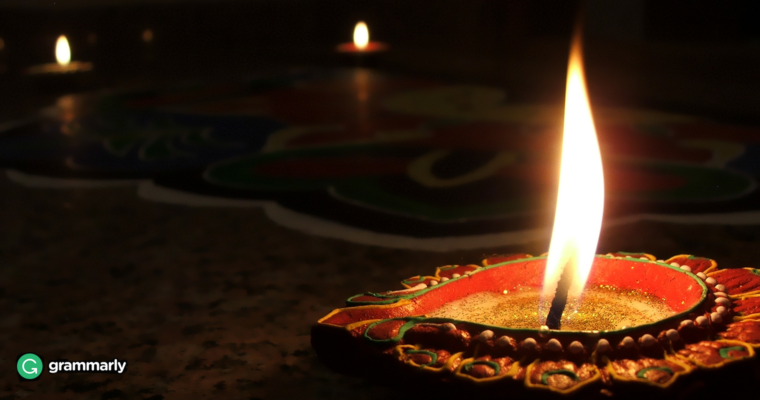
Diwali, the Hindu festival of lights, is an annual holiday that falls in the second half of October or the first half of November. During Diwali, homes across India, Singapore, Pakistan, Malaysia, Myanmar, and many other Asian countries are lit by small lamps. Sweets are eaten and prayers are offered to celebrate the victory of light over dark, good over evil, and hope over despair. This year, the central day of the holiday falls on October 30, and if you want to get into the festive mood but you don’t know how, these seven words might help you.
1 Rangoli
One does not simply wander into Diwali without preparations. The festival usually lasts for five days, with possible regional variations, with the main celebrations falling on the third day. Before that central day comes, however, people prepare their newest and finest clothes. They also prepare their homes, making small repairs and giving everything a thorough clean. Home decorations also play a prominent role. A rangoli is a colorful, intricate pattern made on a flat surface with materials like colored rice or sand, and you can see them in many Indian homes on living room floors or in courtyards during Diwali.
2 Puja
In Hinduism, and also Buddhism, Jainism, and Sikhism, a puja is a prayer ritual. Pujas are performed throughout Diwali, and people from different regions offer prayers to different deities. The central day of Diwali, however, is called Lakshmi Puja for a reason—on this day, people who celebrate usually offer their prayers to the goddess Lakshmi.
3 Lakshmi
In the Hindu pantheon, Lakshmi is the goddess of wealth and prosperity. The first day of Diwali commemorates the day Lakshmi was born. Some believe the central day of Diwali represents the day she married Vishnu. Others say it symbolizes the day Vishnu came back to Lakshmi and their home. Either way, whole families pray to Lakshmi on the central day of Diwali, hoping to be blessed with wealth and fortune or to be graced by her good mood.
4 Diya
A diya is a small clay lamp and one of the most recognizable symbols of Diwali. After the puja to Lakshmi is finished, people light hundreds of diyas and decorate their homes with them. You can even see rooftops decorated with diyas, where they ward off the dark and guide Lakshmi toward the home.
5 Patakhe
Fireworks, or patakhe, are an indispensable part of Diwali, no matter how many people get hurt by them each year. From firecrackers to more elaborate (and dangerous) pyrotechnic devices, if it creates a bang and a flash of light, it will be used on Diwali to keep bad spirits away from home. Also, watching the fireworks is a nice thing to do with family and friends.
6 Mithai
A festival without food isn’t really a festival, but Diwali has its own take on the traditional feast—it’s mostly made up of sweets. Mithai is what sweets are called in India, and they are a mix of candy, snack, and dessert—something you can nibble throughout the day. Mithai are also given as gifts, packed in flamboyantly decorated boxes.
7 Uphaar
The one thing that Diwali and Christmas have in common is the gift-buying craze they cause. It is customary to exchange gifts—uphaar—on Diwali, and while shopping for them might not have been on the minds of people who celebrated the festival of lights thousands of years ago, it has become a part of the modern Diwali.






